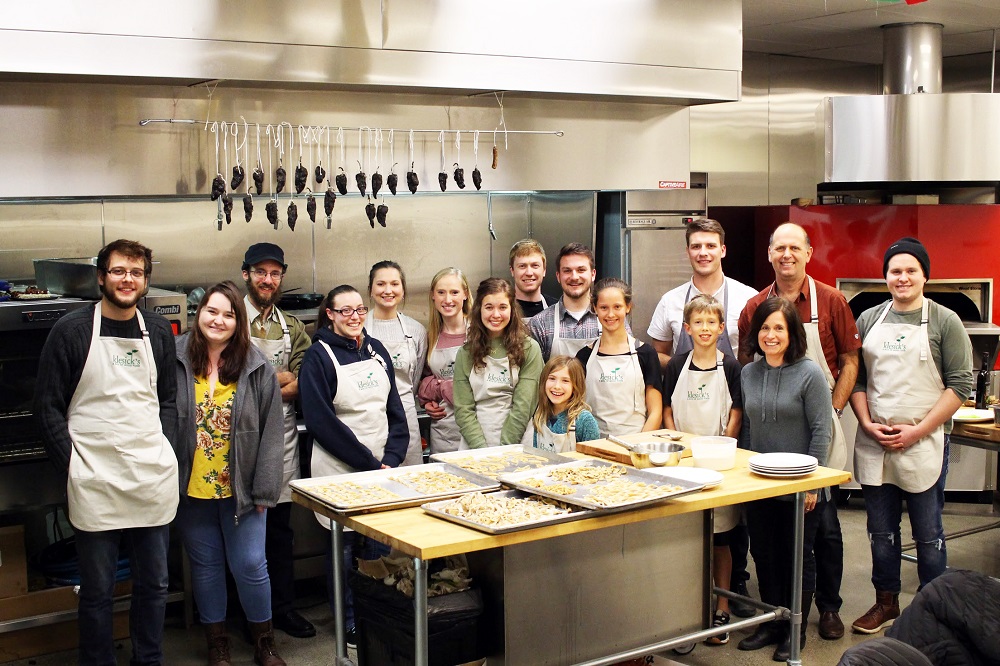We are 70% water, so it’s no mystery why it is one of the most necessary nutrients our body needs. But why is it so hard to drink the recommended 8 glasses of water a day? We know the endless benefits of drinking water: heart circulation, metabolism, joint health, digestive health, clearer skin, etc.
Think of a dried prune; it’s all dry and wrinkled. Now, think of a fresh prune; full of hydration, smooth and healthy. As much practical sense that this all makes, I have to admit the idea of sipping on the same thing all day long can get boring. So lately I have been experimenting with Infused Water. Spring brings us bright, beautiful, and colorful produce that can naturally enhance the flavor of water. Infused water can be any combination of fruits, vegetables, herbs and even flowers. Why infuse water? The answer is simple. By improving the flavor with a healthy option, it’s an easier way to achieve your recommended daily amounts but also include essential vitamins into this healthy drink.
Although there are many flavored waters on supermarket shelves, producing a homemade option is cost effective and far healthier. Most infused waters available at supermarkets include preservatives, artificial sweeteners, and refined sugars. All of these are bad for your short and long-term health, in addition to being an enemy of your skin health.
Everyone has their favorite fruit infused water ingredients, but some are more popular than others. Lemon, lime, strawberries, apples, and oranges are the most popular fruit ingredients, while cucumbers, mint, basil, cinnamon, and ginger are the most popular vegetable ingredients. I think it’s time to produce your own, so I’ve included a basic method to follow. Have fun with it; the rest is up to you! To make your fruit-infused water, simply wash and slice a combination of fruits, vegetables and herbs. Pour cold filtered water on top. Cover the jar and store in the refrigerator. The flavor will get stronger after a few hours. You can replenish the water throughout the day.
Some of my favorite infused water combinations are: Lemon with Strawberry and Cucumber, Cucumber with any Citrus, Apple with Ginger and Cinnamon, Watermelon with Mint, Pineapple and Berry…sounds refreshing, doesn’t it? Here are 3 more tips I follow to ensure I drink enough water throughout the day:
- Set a specific goal for the day: Mine is to drink at least 32oz a day, I am working my way to 64oz but for now, 32oz is the goal!
- Get a bottle you will actually use and keep it close: My bottle requirements are: absolutely no dripping, BPA free plastic and it must fit in the car cup holder.
- Use a straw: I notice that when I use a straw I drink more and faster.
Here’s to a more hydrated you!
Sara Balcazar-Greene (aka. Peruvian Chick)
Peruvian Food Ambassador
peruvianchick.com
instagram.com/peruvianchick
facebook.com/theperuvianchick
Asparagus Soup
Growing up we had soup as the first course almost every day, this soup made it to our family table at least once a week. Enjoy!
Ingredients
2 lb. asparagus, trimmed, cut in ½ in pieces
1 onion, finely chopped
1 leek (white part) chopped
2 tablespoons butter
1 tablespoon oil
5 cups chicken or vegetable broth
¾ cup milk
Salt and pepper to taste
Preparation:
Melt butter and oil in a medium size saucepan at low heat. Add onion and leek and cook until golden brown. Add asparagus and season to taste. Cook stirring for 5 minutes. Add broth and simmer covered for 20 minutes or until asparagus are very tender.
With an immerse blender blend mixture until creamy and soft. Return cream to pan and add milk or cream. Serve with bread croutons if desired.
Asparagus
Uncooked asparagus will stay fresh for three to four days in the refrigerator. The secret is to keep the vegetable cool and damp. Store spears upright in a container with the stems wading in an inch of water, then cover loosely with a plastic bag. Easier still: Wrap the ends in moist paper towels and drop the bundle into a plastic bag.
Use: cooking asparagus takes only a few minutes. The goal: Preserve the bright color and delicate flavor. Broiling or roasting the spears intensifies their inherent sweetness. Steamed or boiled asparagus is great for salads.
If you boil, forget the fancy equipment. Just launch the spears in a skillet full of lightly salted boiling water. The pan should be large enough to fit the spears in one or two layers, so that they cook evenly and quickly. Don’t cover the skillet; otherwise the asparagus will go from bright green to army drab. Start testing for doneness after two or three minutes by piercing the ends with a knife. They should be barely tender, with a slight crunch. Asparagus will continue to cook after you’ve removed it from the pan. If you like asparagus with snap, drop it into a sink full of cold water to stop the cooking.
Tips from thekitchn.com

 Lastly, keep in mind the upcoming delivery day changes for the week of Christmas. Some minor adjustments have been made with the holiday falling on a Tuesday, so double check your day. And of course, if you have travel plans for the next couple weeks, be sure to change your next delivery date from your account online, or contact us and we’ll handle it for you.
Lastly, keep in mind the upcoming delivery day changes for the week of Christmas. Some minor adjustments have been made with the holiday falling on a Tuesday, so double check your day. And of course, if you have travel plans for the next couple weeks, be sure to change your next delivery date from your account online, or contact us and we’ll handle it for you.


